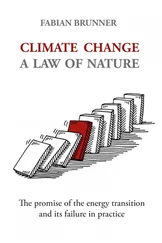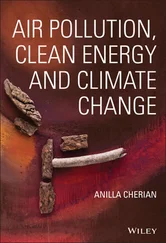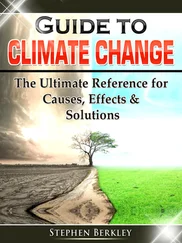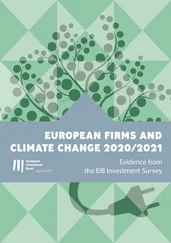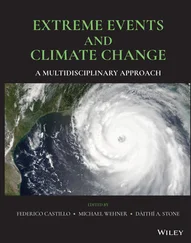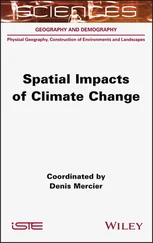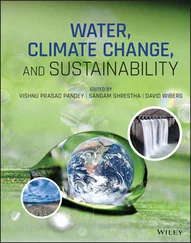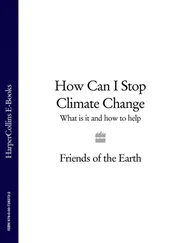Examining the Effects of Global Warming around the World
This book could easily be called Climate Emergency For Dummies. Although “global warming” is the common term for the climate changes that the planet’s experiencing (and scientists agree that average global temperature is increasing with the buildup of GHGs), the term doesn’t tell the whole story. The Earth’s average surface temperature is certainly going up. But while the average keeps rising, the variations around the average are also getting larger and larger. So some areas of the planet may actually get colder or experience more extreme bouts of rain, snow, or ice build-up. Consequently, most scientists prefer the term “climate change.” In the following sections, we look at how different places around the world will experience climate change.
 Much of this section is pretty depressing. But nothing is exaggerated — the information here is all based on peer-reviewed scientific reports. Just how serious could the global impact of climate change be? The first global comprehensive scientific conference, which was held in Toronto, Canada, in 1988, described the potential effects of climate change this way: “Humanity is conducting an unintended, uncontrolled, globally pervasive experiment whose ultimate consequences could be second only to a global nuclear war.”
Much of this section is pretty depressing. But nothing is exaggerated — the information here is all based on peer-reviewed scientific reports. Just how serious could the global impact of climate change be? The first global comprehensive scientific conference, which was held in Toronto, Canada, in 1988, described the potential effects of climate change this way: “Humanity is conducting an unintended, uncontrolled, globally pervasive experiment whose ultimate consequences could be second only to a global nuclear war.”
Of course, different parts of Earth have very different climates now, and climate change won’t affect every part of the planet in the same way. The following sections explain in general terms how some parts of the world are being affected by climate change.
The United States and Canada
In the United States and Canada, average temperatures have been rising because of climate change. As a result, the growing season has lengthened; trees have been sucking in more carbon, and for a while, farms were more productive. The recent years have had far more severe wet years followed by extreme drought. The 2021 drought had negative and long-term impact on wheat, corn, and other crops, according to Forbes.
Many plants and animals are spreading farther north to adapt to climate changes, affecting the existing species in the areas to which they’re moving. Increased temperatures have already been a factor in more forest fires and wildfires and damage by forest insects, such as the pine beetle epidemic in the interior of British Columbia, Canada. (See Chapter 8for more information about how global warming will affect animals and forests.)
Scientists project that the United States and Canada will feel the effects of climate change more adversely in the coming years. Here are some of the problems, anticipated to only get worse if civilization doesn’t dramatically reduce GHG emissions:
Droughts and heat domes: Rising temperatures are increasing droughts in areas that are already arid, putting even larger pressure on scarce water sources in areas such as the U.S. Southwest. In Canada, 600 people died from extreme heat in 2021 as a heat dome (happens when the atmosphere traps hot ocean air) formed over the west and drove temperatures to record levels. Some areas of British Columbia experienced temperatures of 122 degrees Fahrenheit (50 degrees Celsius).
Evaporating lakes: The cities in the great heartland of the Great Lakes Basin will face retreating shorelines when the water levels of the Great Lakes drop because of increased evaporation. Lower water levels will also affect ship and barge traffic along the Mississippi, St. Lawrence, and other major rivers.
Floods: Warmer air contains more moisture, and North Americans are already experiencing more sudden deluge events, causing washed out roads and bridges, and flooded basements and even Manhattan’s subways. In British Columbia in 2021, a form of rainstorm so extreme it’s called an atmospheric river caused massive flooding. The estimated damage to farms and transportation infrastructure was about $5.9 billion US, $7.5 billion Canadian. Bridges and other sections of roads and highways were washed away, isolating coastal areas from the rest of Canada for weeks.
Major storms: Warming oceans increase the risk of extreme weather that will plague coastal cities. Think of Hurricane Katrina, arguably the most devastating weather event ever to hit a North American city, as a precursor of storms like Superstorm Sandy. Katrina was whipped into a hurricane with a massive punch from the super-heated waters of the Gulf of Mexico in 2005. In 2021 a devastating series of tornadoes, way outside the “normal” tornado season, clobbered the southern and central United States, killing almost 100 people and causing millions in damage. Not all extreme weather events are hurricanes. Global warming is expected to increase ice storms in some areas and thunderstorms in others.
Melting glaciers: Glaciers from the Rockies to Greenland, are in rapid retreat, according to the National Snow and Ice Data Center. Glacier National Park could someday be a park where the only glacier is in the name. When glaciers go, so does the spring recharge that flows down into the valleys, increasing the pressure on the remaining water supplies. People who depend on drinking water from rivers or lakes that are fed by mountain glaciers will also be vulnerable.
Rising sea levels: Water expands when it gets warmer, so as global average temperatures rise, warmer air warms the ocean. Oceans are expanding, and sea levels are rising around the world, threatening coastal cities — many of which are in the United States and Canada. This sea level rise will be far more devastating if ice sheets in Greenland and Antarctica collapse.
Changes across northern Canada and Alaska are more profound than in the south. We discuss these impacts in the section “ Polar regions,” later in this chapter.
On average, North Americans have many resources, in comparison to developing regions of the world, to help them adapt to climate change. The Intergovernmental Panel on Climate Change (IPCC) says Canada and the United States can take steps to avoid many of the costs of climate change, to better absorb the effects, and to avoid the loss of human lives. For example, North America could establish better storm warning systems and community support to make sure that poor people in inner cities have some hope of relief during more frequent killer heat waves. (See Chapter 10for more information about what governments can do to help their countries adapt to the effects of climate change.)
South America has seen some strange weather in the past few years. Drought hit the Amazon in 2005, Bolivia had hail storms in 2002, and the torrential rainfalls lashed Venezuela in 1999 and 2005. In 2003, for the first time ever, a hurricane hit Brazil. More recently, the World Meteorological Association says:
“Latin America and the Caribbean (LAC) is among the regions most challenged by extreme hydro-meteorological events. This was highlighted in 2020 by the death and devastation from Hurricane Eta and Iota in Guatemala, Honduras, Nicaragua, and Costa Rica, and the intense drought and unusual fire season in the Pantanal region of Brazil, Bolivia, Paraguay, and Argentina. Notable impacts included water and energy-related shortages, agricultural losses, displacement and compromised health and safety, all compounding challenges from the COVID-19 pandemic.”
Other changes in Latin America may be attributable to global warming. Rain patterns have been changing significantly. More rain is falling in some places, such as Brazil, and less in others, such as southern Peru. Glaciers in the Andes Mountains and across the continent are melting. This glacier loss is a particular problem in Bolivia, Ecuador, and Peru, where many people depend on glacier-fed streams and rivers for drinking water and electricity from small-scale hydroelectric plants. (See Chapter 9for more about how global warming will affect humans.)
Читать дальше
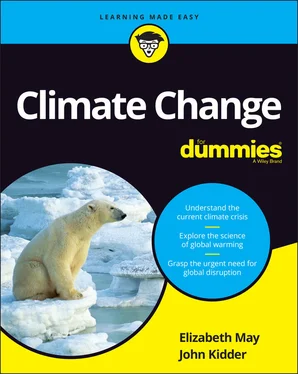
 Much of this section is pretty depressing. But nothing is exaggerated — the information here is all based on peer-reviewed scientific reports. Just how serious could the global impact of climate change be? The first global comprehensive scientific conference, which was held in Toronto, Canada, in 1988, described the potential effects of climate change this way: “Humanity is conducting an unintended, uncontrolled, globally pervasive experiment whose ultimate consequences could be second only to a global nuclear war.”
Much of this section is pretty depressing. But nothing is exaggerated — the information here is all based on peer-reviewed scientific reports. Just how serious could the global impact of climate change be? The first global comprehensive scientific conference, which was held in Toronto, Canada, in 1988, described the potential effects of climate change this way: “Humanity is conducting an unintended, uncontrolled, globally pervasive experiment whose ultimate consequences could be second only to a global nuclear war.”